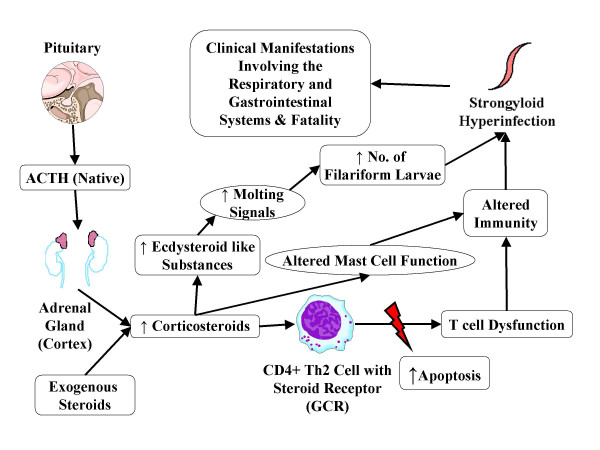Figure 2.
Corticosteroids and strongyloid hyperinfection syndrome. The pathophysiological pathway showing the mechanism of corticosteroids leading to strongyloid hyperinfection syndrome and disseminated infection. Corticosteroids along with cortisol act on specific receptors called glucocorticoid receptors (GCRs) available on CD4+ Th2 cell membrane causing apoptosis and thus T cell dysfunction. Corticosteroids also increase ecdysteroid like substances in the body which act as molting signals for eggs and rhabditiform larvae, leading to increased number of filariform larvae [41,57].

